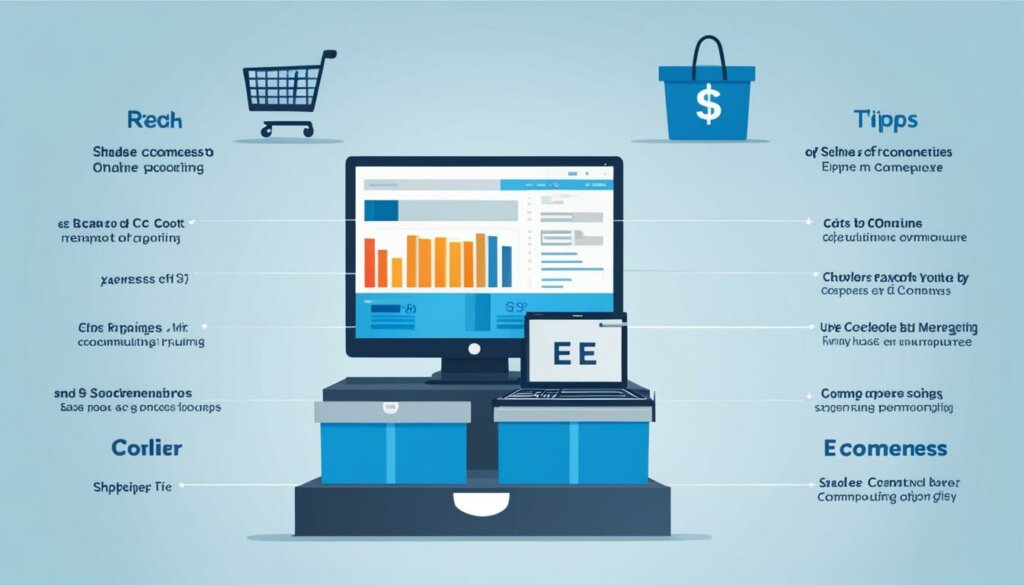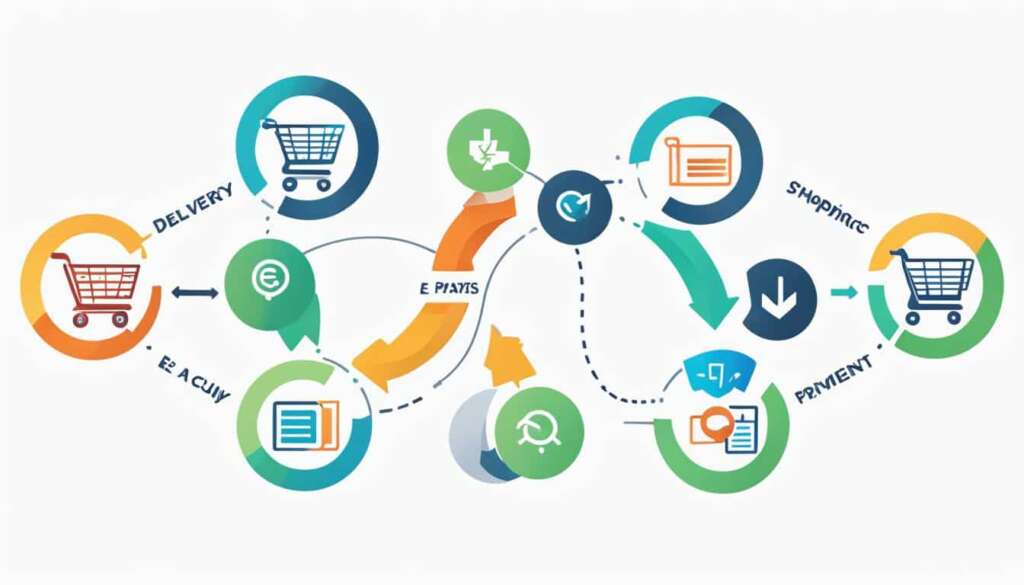Table of Contents
E-commerce has become increasingly popular in recent years, but it’s important for business owners to understand the potential disadvantages and challenges of entering the online retailing space. While there are certainly advantages to e-commerce, such as reaching a wider customer base and operating 24/7, there are also several drawbacks to consider. In this article, we will explore some of the main disadvantages of e-commerce, including concerns about privacy and security, the lack of in-store customer engagement, and the added costs of operating an online store.
Limited in-person interaction with customers
One major disadvantage of e-commerce is the lack of in-person interaction with customers. While online shopping offers convenience and the ability to browse a wide range of products, it cannot replace the personal experience of shopping in a brick-and-mortar store. Customers may miss the ability to speak with sales assistants, try on clothing for fit, and feel the texture of products before making a purchase. Additionally, online shopping often provides limited pictures and information, making it difficult for customers to make informed choices. Overall, the lack of in-store engagement and personal touch can be a significant loss for businesses operating solely in the e-commerce space.
E-commerce may lack the personal engagement and in-store experiences that customers value when making purchasing decisions. The absence of in-person interactions can hinder the overall shopping experience and leave customers feeling disconnected from the brand. Without the ability to speak with sales associates or physically examine products, customers may have difficulty evaluating their quality or suitability. As a result, businesses need to find innovative ways to bridge this gap and provide a personalized touch in the digital realm.
Furthermore, tactile considerations play a vital role in the decision-making process of many customers. In physical stores, individuals can touch and feel products, allowing them to gauge their texture, weight, or other tangible qualities. These tactile experiences contribute to the overall satisfaction of customers and instill confidence in their purchase decisions. However, e-commerce platforms often fall short in replicating these experiences, relying solely on product descriptions and images. This lack of tactile engagement can lead to reservations among customers, especially when purchasing items such as clothing, accessories, or home decor.
“The lack of in-person interaction in e-commerce can hinder the discovery process and limit the personal connection between customers and brands. Without the ability to physically experience products, customers may feel uncertain about their purchase decisions, ultimately leading to higher return rates and lower customer satisfaction.”
Addressing the Lack of In-Store Engagement
Businesses operating in the e-commerce space must actively address the lack of in-store engagement to enhance customer satisfaction and drive sales. Here are some strategies that can help:
- Invest in virtual shopping experiences that provide customers with a sense of exploring a physical store.
- Utilize live chat or chatbot features to offer personalized assistance and guidance.
- Enhance product descriptions by incorporating detailed information about texture, materials, and other tactile aspects.
- Offer hassle-free return policies to alleviate customer concerns about purchasing products without physically examining them.
- Create engaging video content that showcases products from different angles and provides a more immersive experience.
By implementing these strategies, businesses can bridge the gap between online and offline shopping experiences, providing customers with a more interactive and enjoyable e-commerce journey.
In the next section, we will explore another significant concern associated with e-commerce – security and privacy.
Security and Privacy Concerns
Another disadvantage of e-commerce is the concern over security and privacy. As online shopping continues to thrive, instances of online fraud have also increased, leaving customers wary about providing personal information, especially credit and debit card details, to online sources.
To address these concerns, online stores must prioritize the implementation of secure systems and encrypted payment software to safeguard customer data and ensure a safe online shopping experience. By investing in robust security measures, businesses can protect their customers from potential risks and build trust with their online audience.
“Ensuring the security of our customers’ information is our top priority. We employ advanced encryption technology and regularly update our security systems to protect against online fraud.”
Despite these measures, some customers may still have reservations when making online purchases due to lingering security concerns. It is crucial for e-commerce businesses to prioritize transparency and provide clear information about their security protocols and data protection policies to reassure customers and alleviate any doubts.
As technology continues to evolve, businesses must stay one step ahead of potential threats by frequently assessing and updating their security systems. Emphasizing the importance of privacy and security can help mitigate customer apprehension and encourage them to engage in online transactions confidently.
Key Points:
- Rising instances of online fraud have led to customer apprehension about providing personal information to online sources.
- Implementing secure systems and encrypted payment software is essential to protect customer data.
- Transparency and clear communication about security protocols can alleviate security concerns.
- Regularly assessing and updating security systems is crucial in mitigating potential risks.
By prioritizing security and privacy, businesses can build trust and confidence among their online customers, ensuring a safe and secure online shopping experience.
| Concern | Solution |
|---|---|
| Online fraud | Invest in secure systems and encrypted payment software |
| Customer reservations | Transparent communication about security protocols |
| Regular security assessments | Frequently update security systems |
Higher Operating Costs
Operating an online store comes with its own set of costs. While web hosting for e-commerce stores is generally less expensive than maintaining a physical storefront, there are still expenses to consider. These include the initial setup and maintenance costs of an e-commerce site, as well as the need for skilled labor trained in digital marketing and technology to maximize its potential. Additionally, small business owners may find it challenging to handle the added work of managing an online store alongside their existing responsibilities. However, there are options such as using an integrated POS system that includes an online store, which can simplify operations and provide cost-saving benefits.

| Costs | Description |
|---|---|
| Initial Setup | Includes website development, design, and integration of payment gateways. |
| Maintenance | Covers regular updates, security measures, and technical support. |
| Skilled Labor | Requires digital marketing experts, web developers, and IT professionals. |
| Additional Workload | Small business owners may need to juggle online store management with existing responsibilities. |
| Integrated POS System | Using a system that combines an online store with in-store operations can streamline processes and reduce costs. |
Conclusion
While e-commerce offers numerous advantages for businesses, it is crucial to understand and address the potential disadvantages and challenges. By considering the drawbacks of e-commerce, businesses can make informed decisions about entering the online retailing industry.
One of the main concerns with e-commerce is the lack of in-person customer engagement. While online shopping provides convenience, it cannot replace the personal experience and tactile considerations of shopping in a physical store. Customers may miss the opportunity to interact with sales assistants, try on products, and experience the tangible aspects of shopping.
Another significant disadvantage is the concern over security and privacy. With the increase in online shopping, the risk of online fraud has also risen. Customers may be hesitant to provide personal information, such as credit card details, due to security concerns. Implementing secure systems and encryption software is essential to mitigate these worries.
Additionally, operating an online store comes with added costs. From initial setup and maintenance expenses to the need for skilled digital marketing and technology professionals, managing an online store can be cost-intensive. However, utilizing integrated point of sale (POS) systems that include online stores can help streamline operations and optimize costs.
By addressing the challenges of online retailing, such as the lack of in-person customer engagement, security and privacy concerns, and higher operating costs, businesses can navigate the world of e-commerce effectively and maximize their chances of success.
FAQ
What are some of the main disadvantages of e-commerce?
Some of the main disadvantages of e-commerce include limited in-person interaction with customers, security and privacy concerns, and higher operating costs.
What is the impact of limited in-person interaction with customers?
Limited in-person interaction with customers in e-commerce means that customers miss out on the personal experience of shopping in a brick-and-mortar store, such as speaking with sales assistants, trying on clothing for fit, and feeling the texture of products before making a purchase.
What are the security and privacy concerns associated with e-commerce?
Security and privacy concerns in e-commerce arise from the rise of online shopping and instances of fraud. Customers may feel apprehensive about providing personal information, particularly credit and debit card details, to online sources. Online stores must invest in secure systems and encrypted payment software to protect customer data.
What are the additional costs of operating an online store?
Operating an online store comes with expenses such as the initial setup and maintenance costs of an e-commerce site. Additionally, skilled labor trained in digital marketing and technology is needed to maximize the potential of the online store. Web hosting for e-commerce stores is generally less expensive than maintaining a physical storefront, but these costs should still be considered. However, using an integrated POS system that includes an online store can simplify operations and provide cost-saving benefits.













